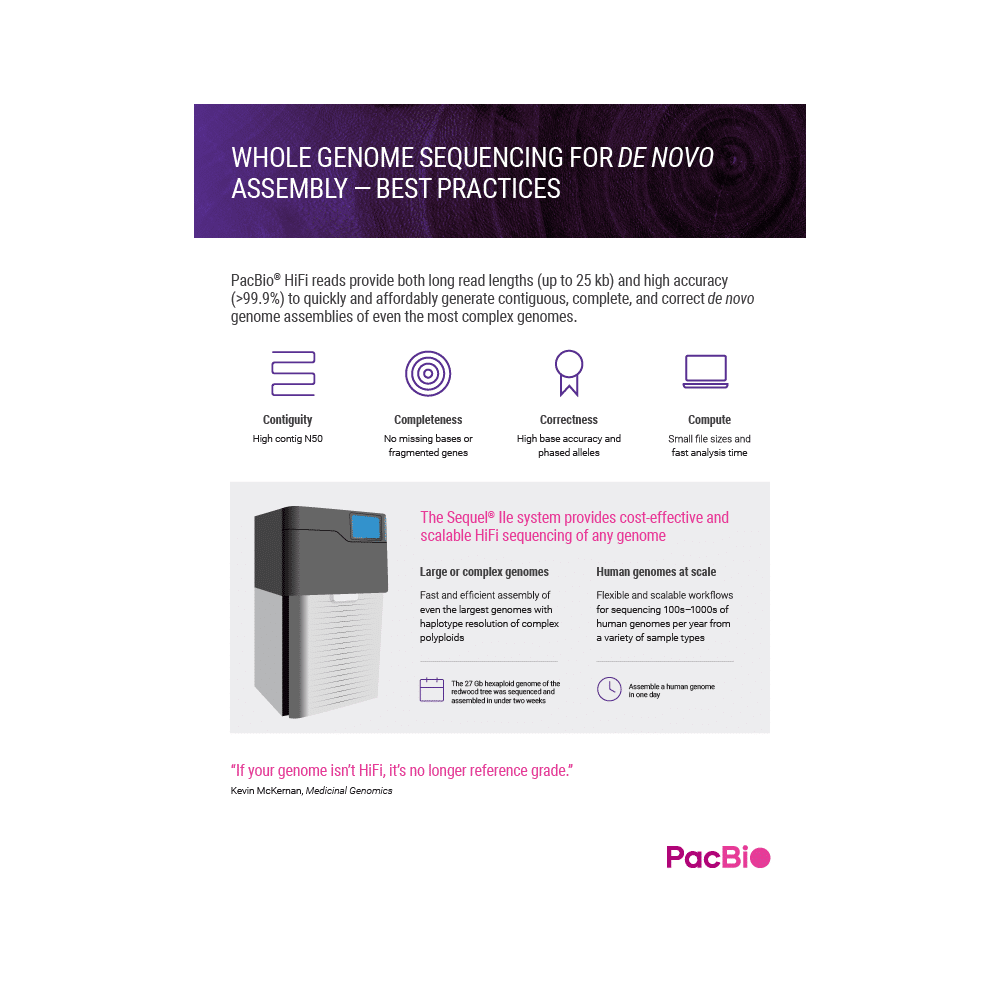Workflow
From DNA to reference-quality genome assembly with HiFi sequencing
Use this workflow to generate high-quality de novo assemblies quickly and affordably with HiFi reads. You can assemble up to a 2 Gb genome and simultaneously detect 5mC methylation at CpG sites in a single SMRT Cell 8M or scale up for larger genomes and run up to 200 samples (2 Gb) per year, per Sequel II or IIe system.
Library preparation
Starting with unamplified genomic DNA, prepare libraries for whole genome sequencing using standardized protocols and workflow recommendations.
- Prepare a library with the SMRTbell prep kit 3.0
Sequencing
The Sequel IIe system provides affordable HiFi coverage for high-quality genome assemblies.
- Use the Sequel II or IIe system to sequence to desired coverage depth for complexity of genome
- 10- to 15-fold coverage per haplotype recommended
Data analysis
Assemble genomes with full-solution analytical software tools and standard file formats.
- Use SMRT Link genome assembly, or tools including IPA, HiCanu, or hifiasm to assemble and phase the genome
- Obtain base-level methylation profiles with 5mC detection
- See sample datasets
Application brief
Whole genome sequencing + epigenome detection for de novo assembly
Download the application brief to learn more about the best practices for whole genome sequencing for de novo assembly and simultaneous 5mC methylation detection.
Sequence even the smallest organisms with confidence
Contiguous, accurate genomes are essential tools to understand insect biology and to combat their role as disease vectors and agricultural pests. However, there are several key challenges to studying small-bodied organisms:
Due to their small size, many insects, including mosquitoes, provide only nanogram-level quantities of DNA.
It is common to pool many individuals to bolster DNA yield; however, this adds additional haplotypes and complicates the assembly process.
To reduce the negative effects of pooling individuals, the process of inbreeding for multiple generations is often necessary.
Application note
PacBio has Two Workflows to Help Overcome these Challenges:
- SMRTbell prep kit 3.0 WGS workflow — prepare a library from as little as 300ng of input DNA
- Ultra-low DNA input workflow — prepare a library from 5ng of input DNA using amplification
Explore this application note to learn which of these approaches will work best for you, and connect with a PacBio scientist to have your questions answered
